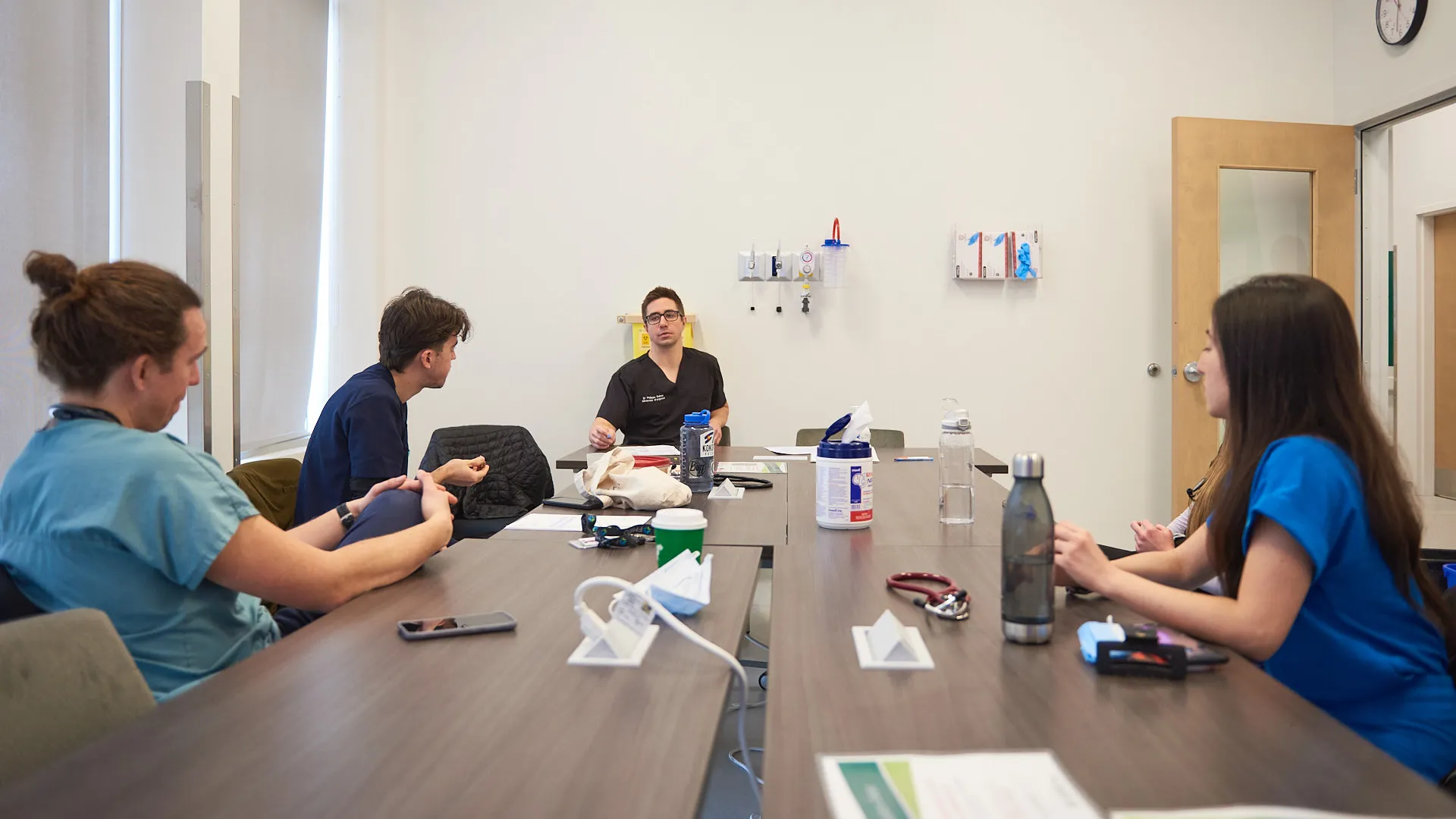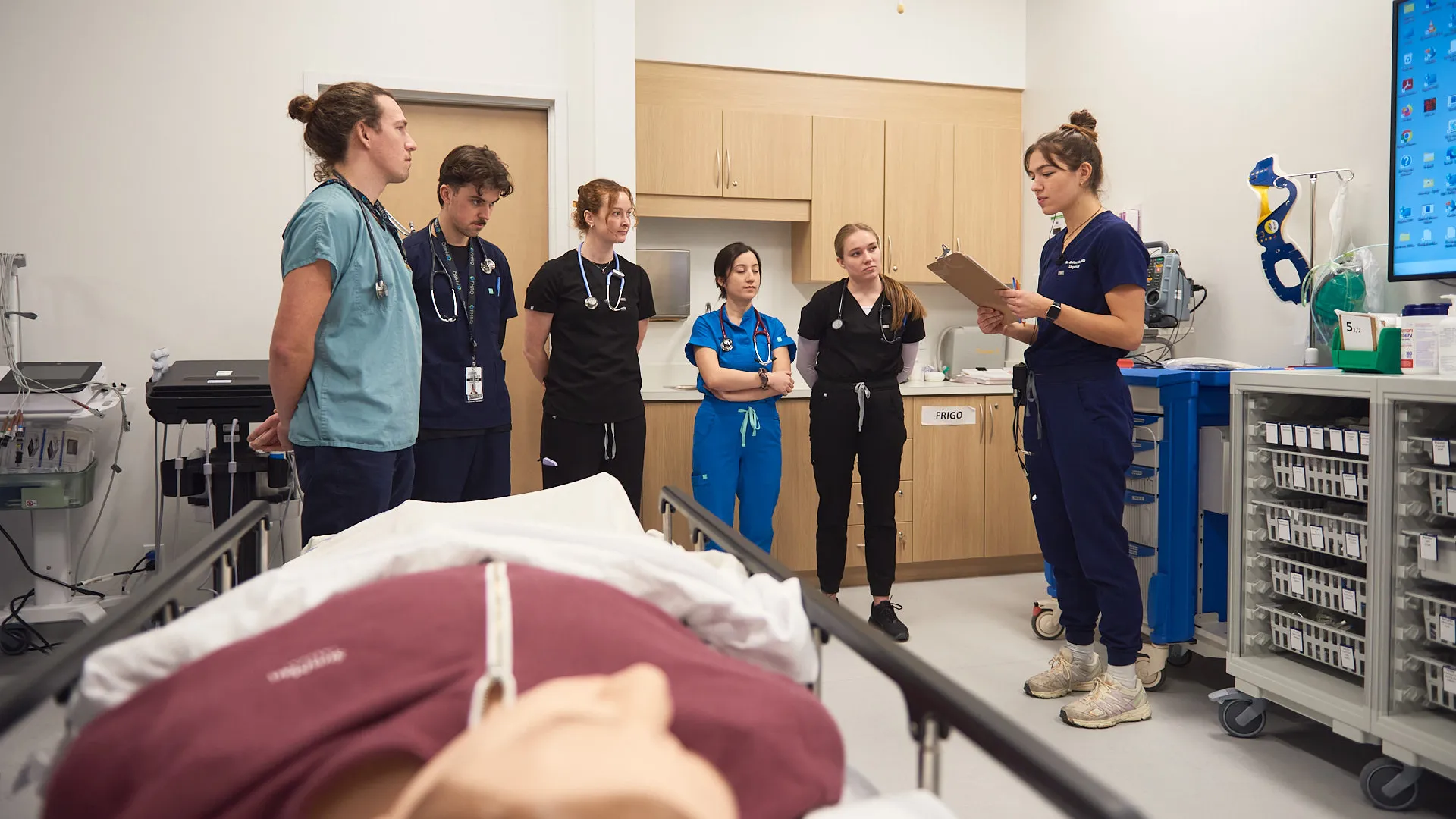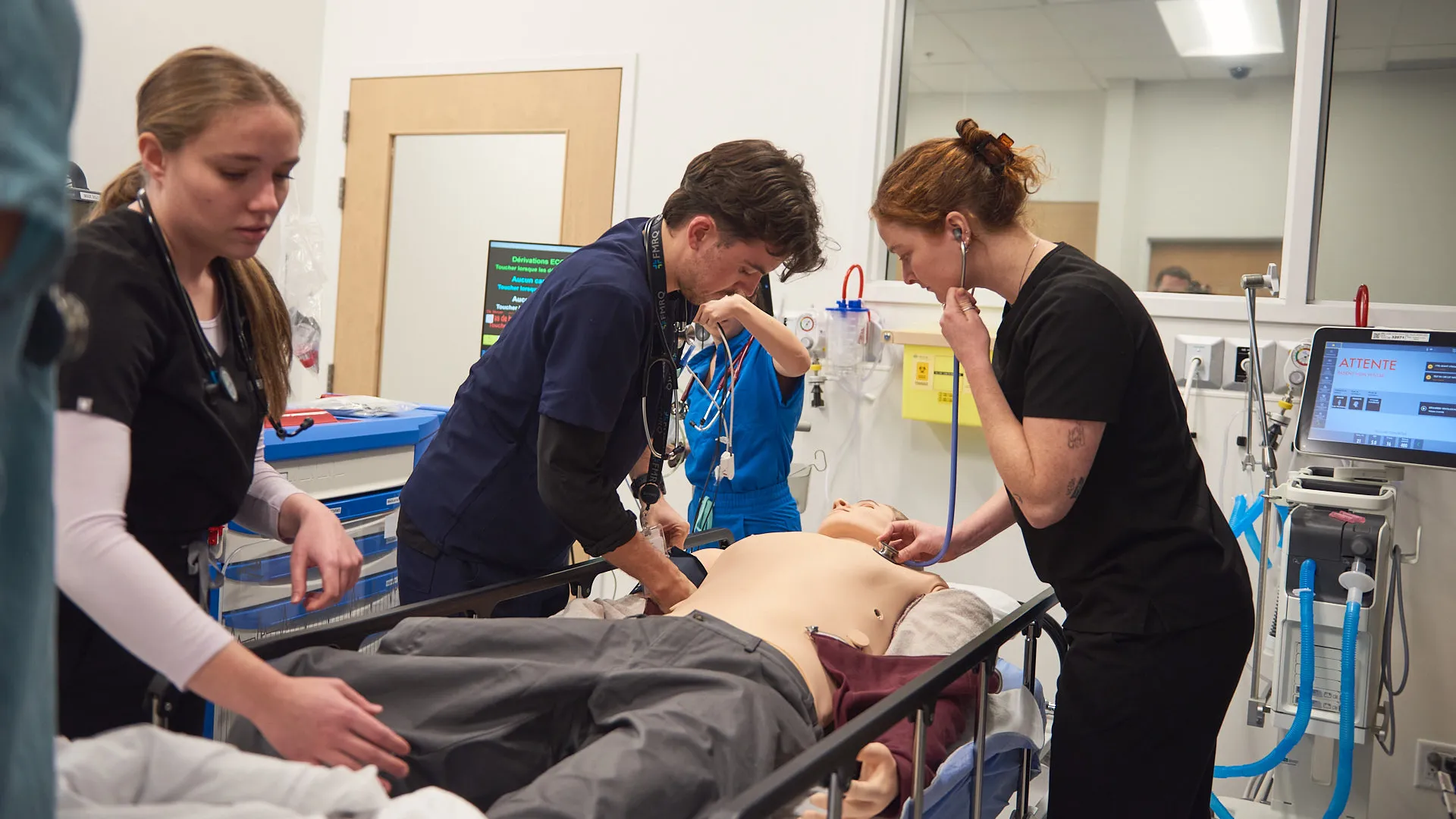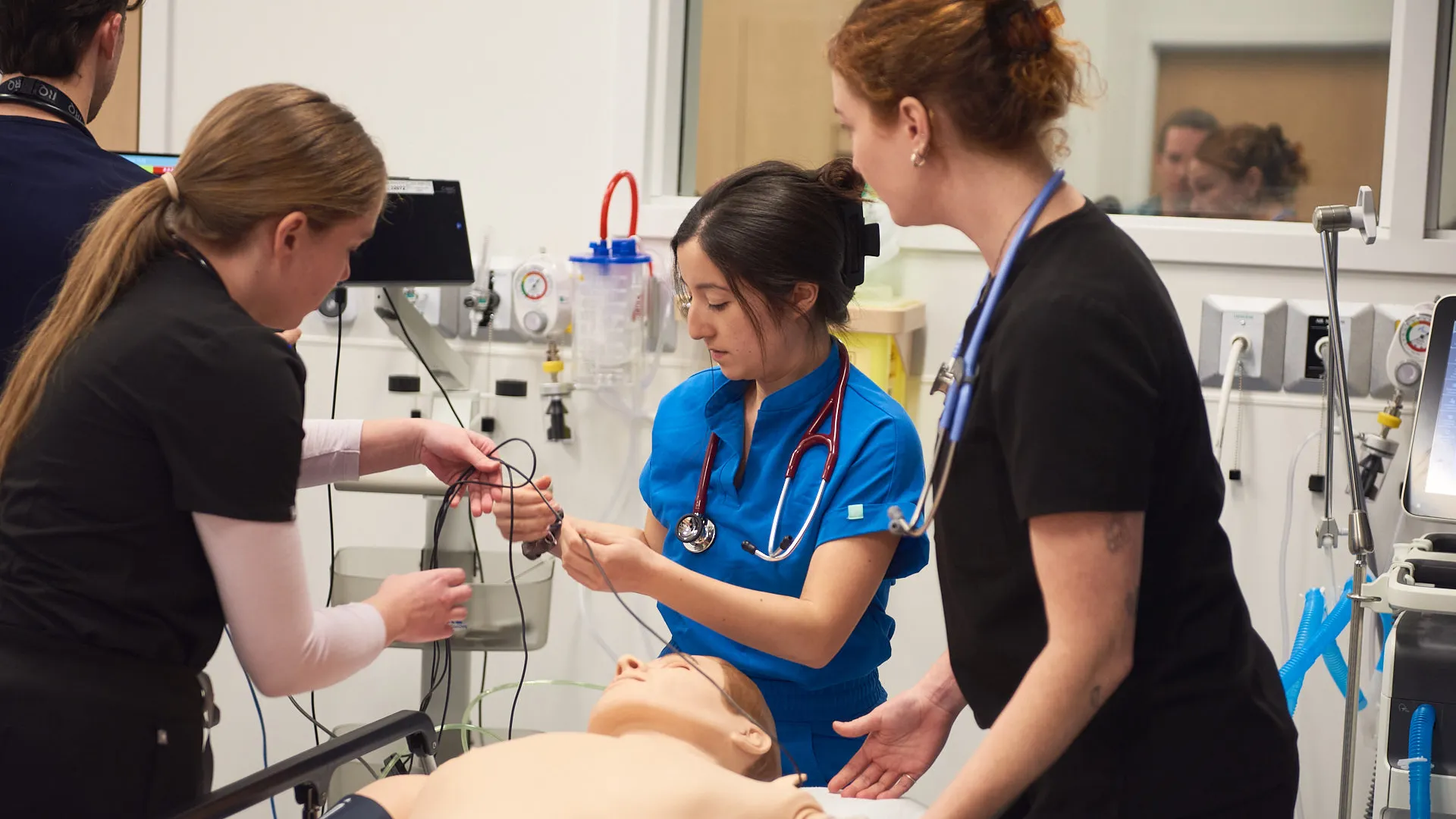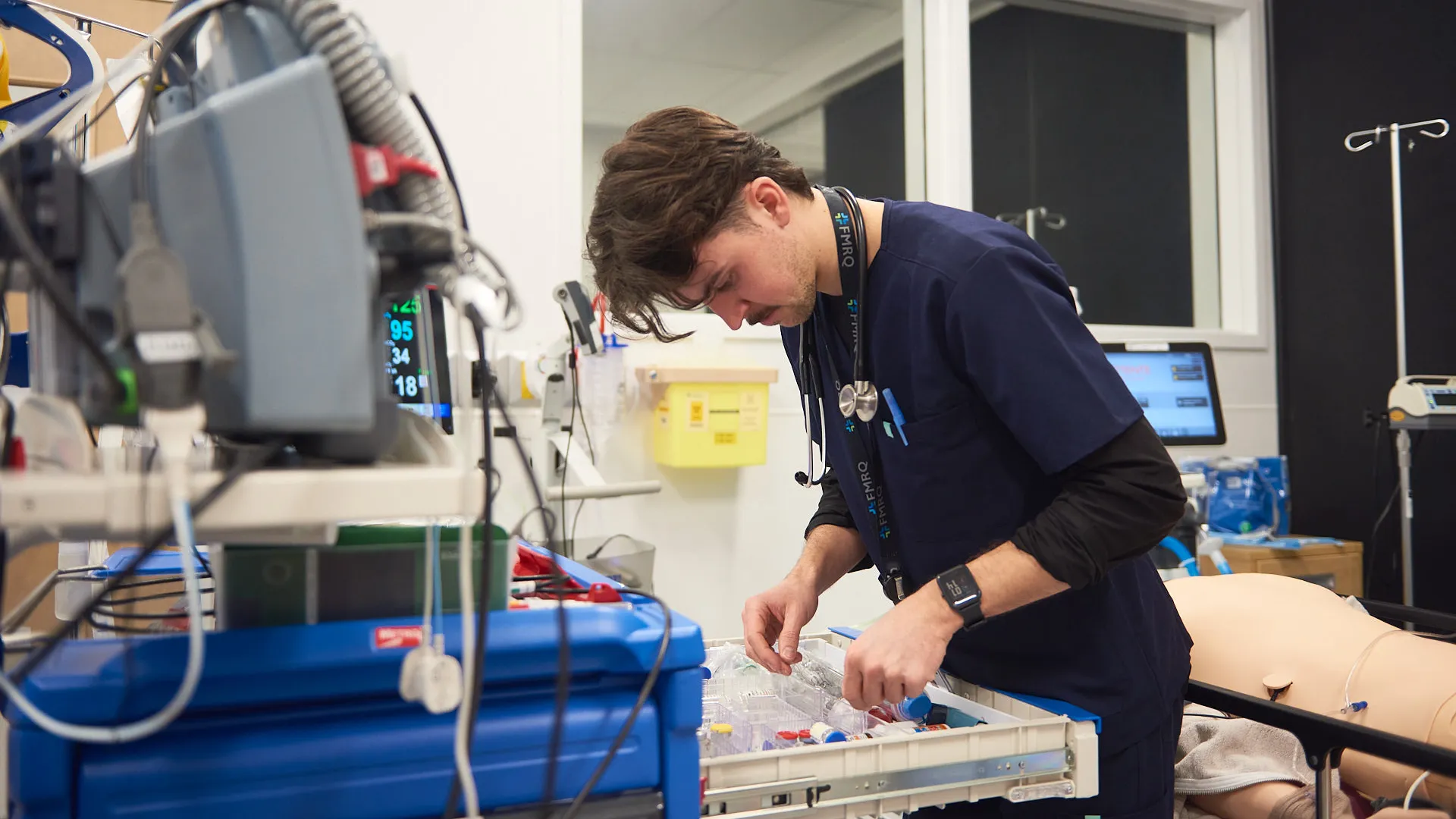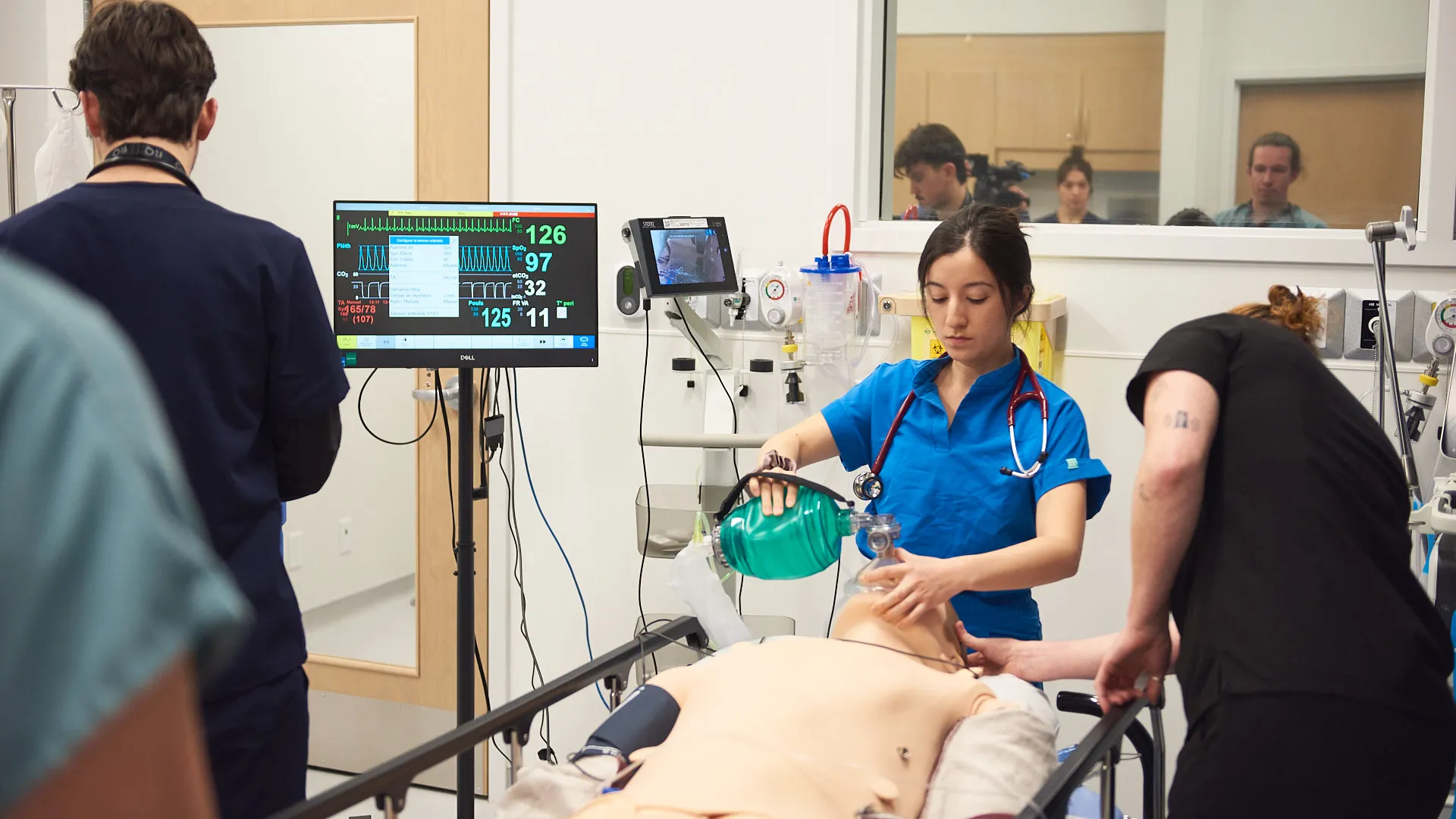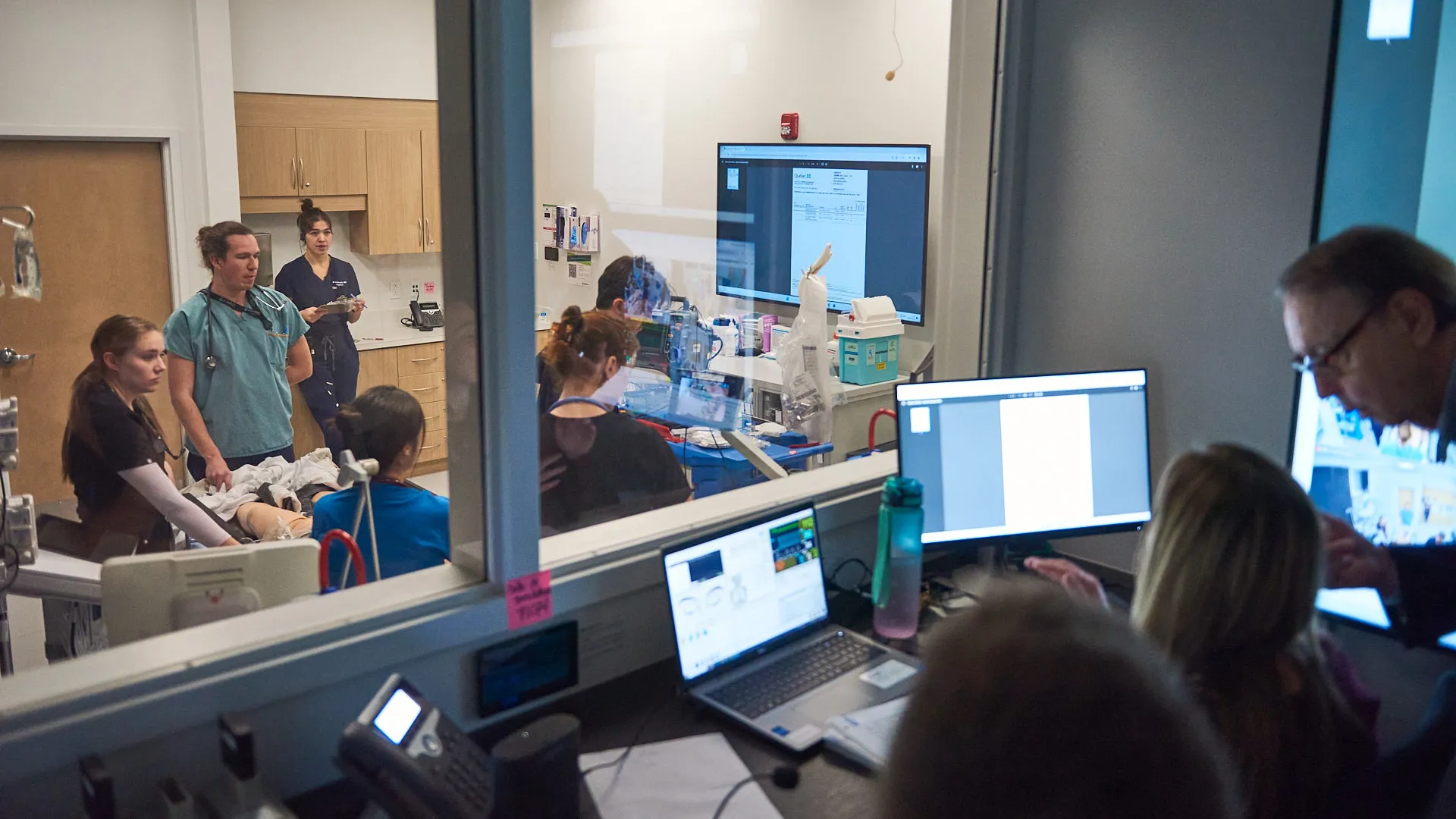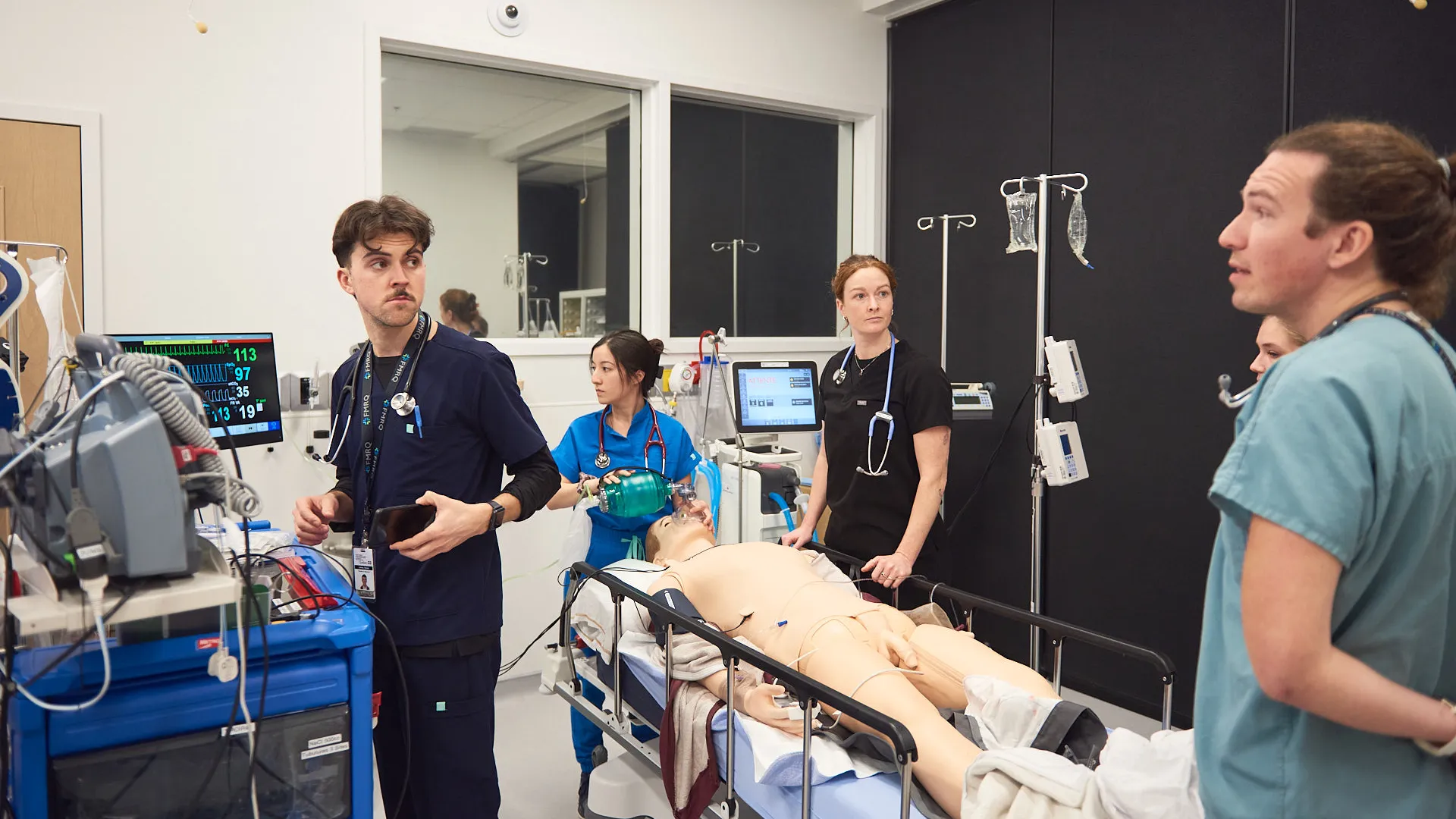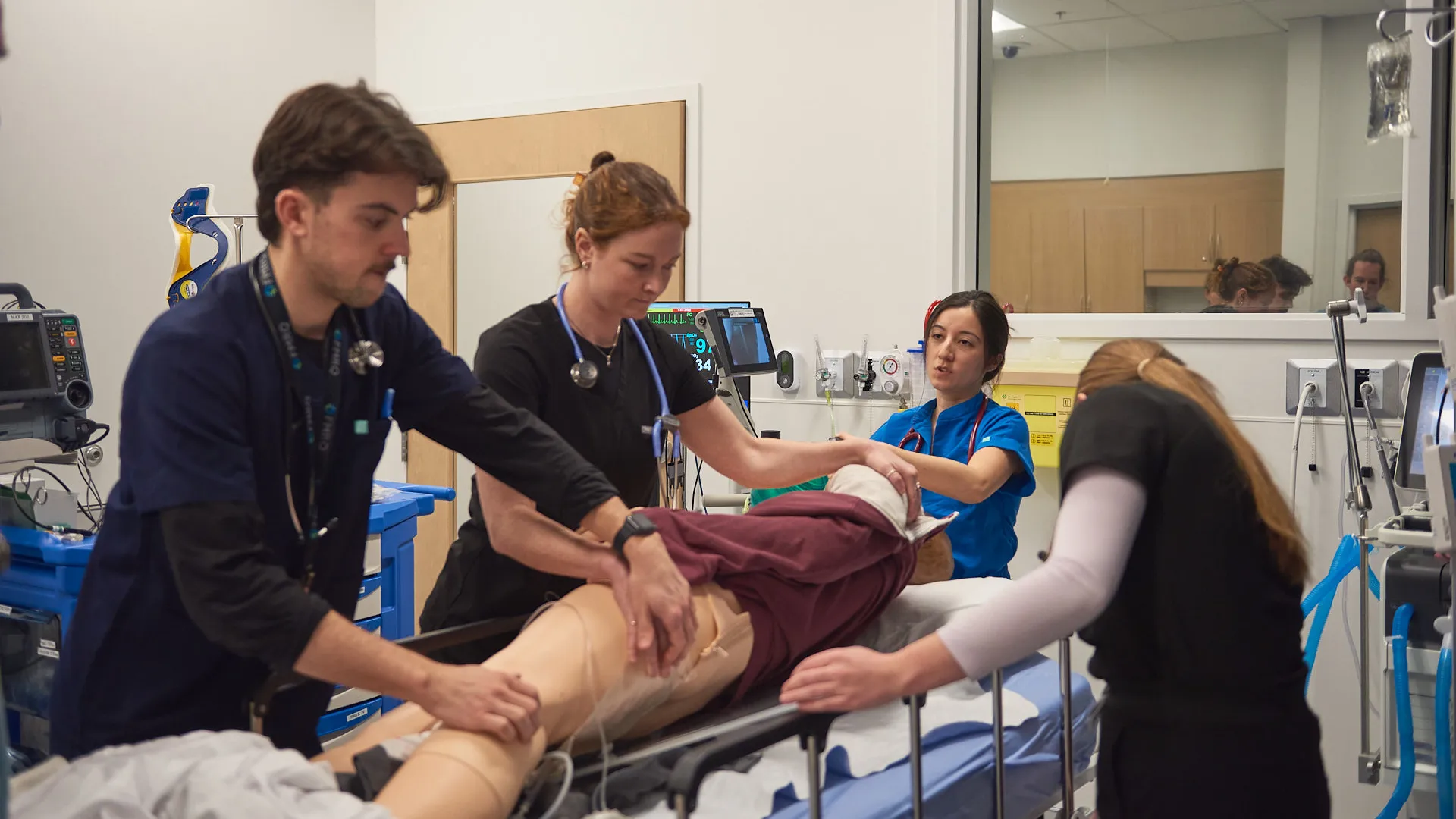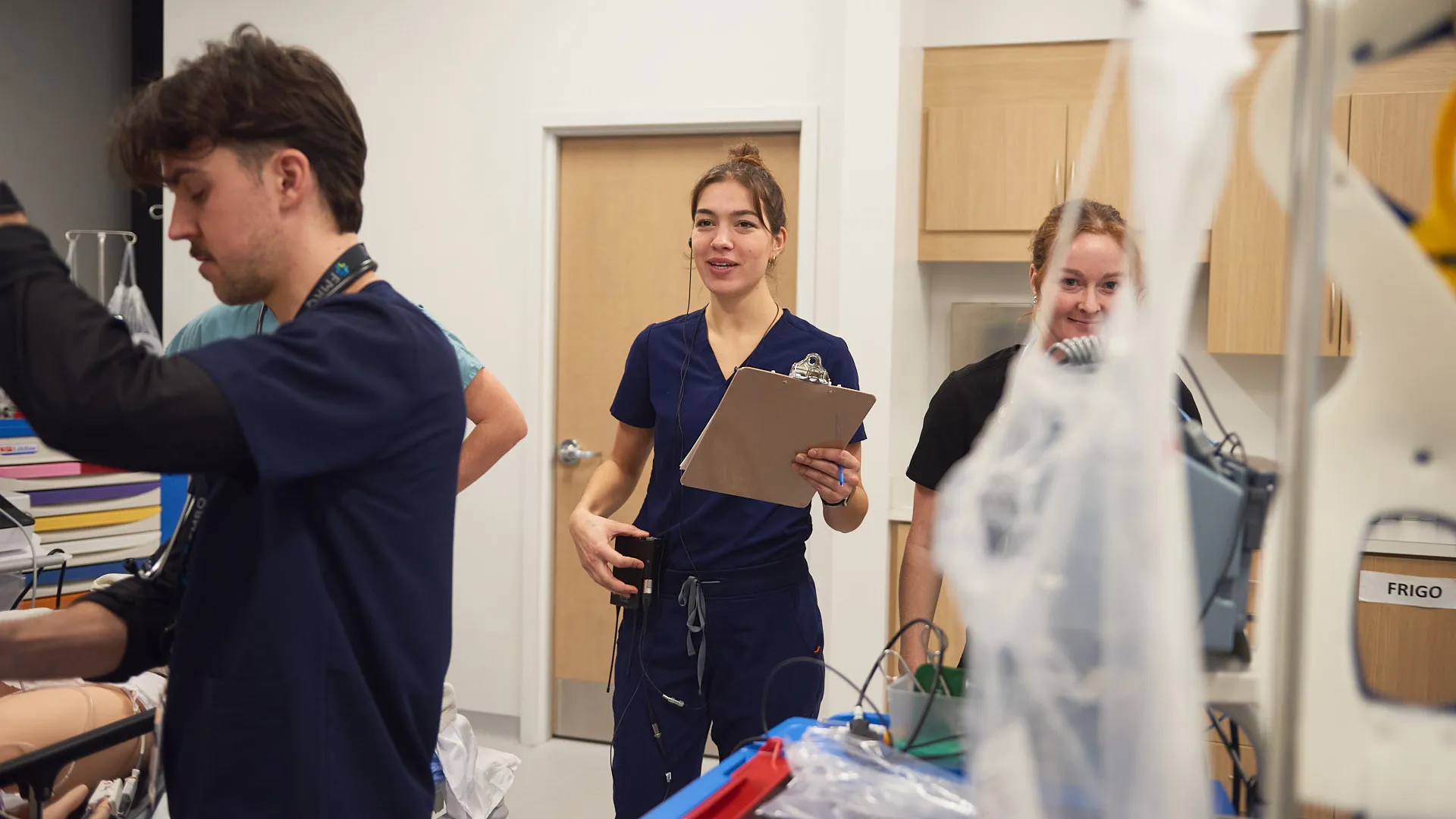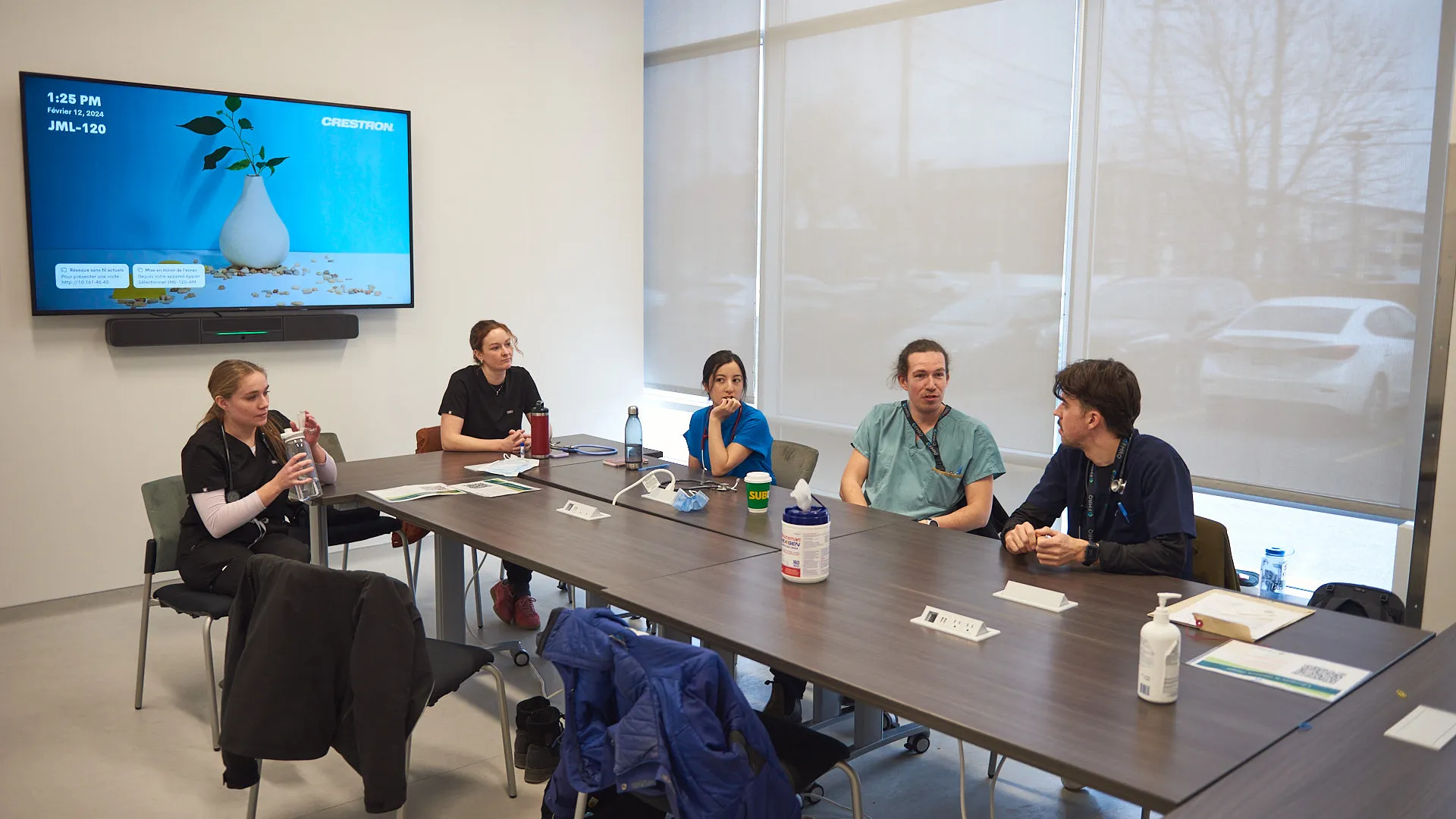The simulation room offers our students skills and safety, with efficiency.
Dr. Philippe Dubuc
Physician, Hôpital Charles-Le Moyne
Professor, Faculty of Medicine and Health Sciences
A patient who’s been having convulsions for 25 minutes is on his way to the hospital. He arrives. Jasmin, Agnès, Thomas, Alice and Carolane, all medical students or residents, are working around him. They take his vital signs. They administer medication. They provide ventilatory support. They manage to stabilize him. The patient can now be transferred to intensive care.
You’ve just watched a simulation with a high-fidelity mannequin, supervised by professors trained in simulation. And yet, you would’ve thought you were watching a real emergency room in action! It’s that realistic.
The advantages of simulation? Students learn how to work with other health professionals and manage stress in a completely safe setting, with the most advanced technologies, and with no risk to the patient. This will equip them better for the day they’re in a real emergency situation. Especially because they’re using the same equipment they’ll be using at the Hospital.
What is a simulation room?
- It’s an innovative and revolutionary tool for diagnostics but also for doctor training! It’s a room that reproduces all kinds of clinical situations requiring treatment by a care team.
- This risk-free environment allows students to be evaluated as they handle situations that require composure and the ability to make the right decisions.
When you fund innovative teaching initiatives like the simulation room, you’re contributing to training the next generation of medical professionals and to the continuous training of care staff. You’re also consolidating Hôpital Charles-Le Moyne’s role as a major hub of university teaching.
Photo Report
Dive into a behind-the-scenes peek of a simulation with our medical residents!
Louise and Denis S. Arcand, they’re saying THANK YOU!
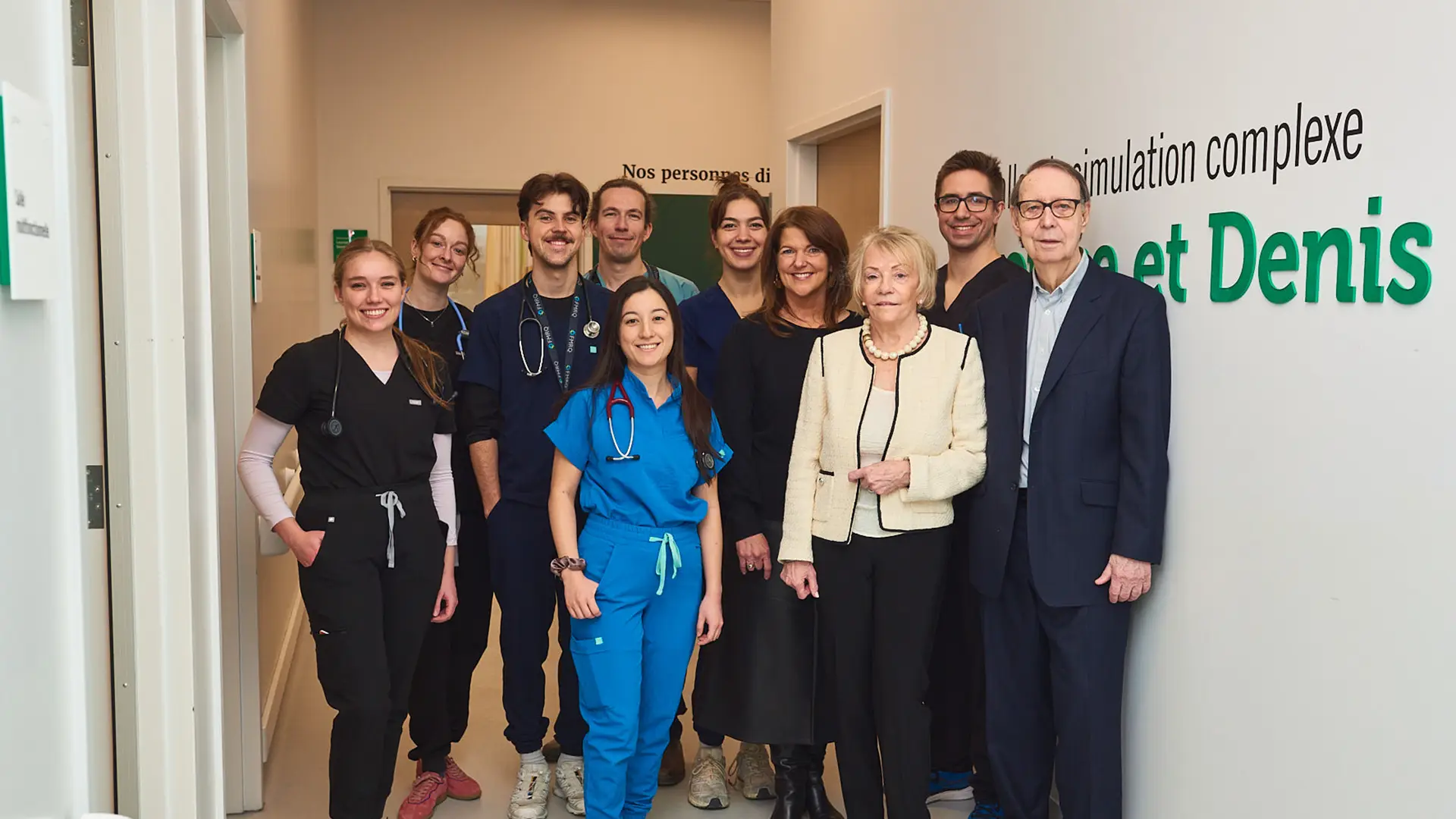
The simulation room is a Hôpital Charles-Le Moyne project. But it’s also the philanthropic project of Louise and Denis S. Arcand. Investing in teaching, in students and in the physicians of tomorrow is essential for the future of care provided at the Hospital. That’s something the Arcands have fully understood!
We’re impressed to see the results of our investment. It’s as if we were in a real emergency room. It’s fantastic!
Louise and Denis S. Arcand
What a joy to visit the simulation room alongside the donors! It’s always a special moment to see the curiosity, satisfaction and pride in the completion of a philanthropic project. Thank you, Louise and Denis S. Arcand, for the wonderful adventure we experienced together.
Nathalie Boudreau
President and Executive Director, Fondation Hôpital Charles-LeMoyne
Thank you for propelling us into the modern era in training medical students, residents and health professionals at the Hospital, to the great benefit of the population of the Montérégie.
Dr. Jacques-Philippe Faucher
Physician, Hôpital Charles-Le Moyne
Associate Dean, Faculty of Medicine and Health Sciences
Thank you for enabling residents, students and staff at the Hospital to practise in safe conditions.
Dr. Philippe Dubuc
Physician, Hôpital Charles-Le Moyne
Professor, Faculty of Medicine and Health Sciences
We use the simulation room all the time. Thank you!
Dr. Marie-Adèle Hacala
It’s one of our favourite days. Truly!
Agnès Côté
Resident in family medicine
